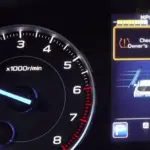How Thick Are New Brake Pads?
Ah, brake pads – those unsung heroes of the automotive world. They’re like the trustworthy friends who always have your back, or in this case, your car’s wheels, ensuring you don’t go crashing into the neighbor’s fancy new mailbox. Today, we’re diving deep (but not too deep – we’re not talking Mariana Trench levels here) into the thrilling world of brake pads, particularly their thickness. Buckle up, folks; it’s going to be a moderately exciting ride!
January 31, 2024
Table of ContentsShow
Introduction to Brake Pads: More Important than Your Morning Coffee
Before we jump into numbers that might remind you of that dreaded high school math class, let’s understand what brake pads are. In the simplest terms, brake pads are the components in your car’s braking system that, when you press the pedal, press against the brake rotors/discs. This action, thanks to the wonders of friction (shoutout to our friend, science), slows down your car. They’re like the red light of your vehicle’s motion, but less annoying.
The Magical Numbers: Just How Thick Are They?
Brand Spanking New Pads: The Starting Line
- Standard Thickness: New brake pads typically measure between 10 to 12 millimeters. This thickness is the sweet spot for most car manufacturers – not too thick to make your car look like it’s wearing platform shoes, but thick enough to do their job effectively.
The Variations: Not All Pads Are Created Equal
- Small Cars: For smaller cars, the pads might be on the thinner side, think around 8 to 10 millimeters. These cars are like the lightweight boxers of the automotive world – quick, agile, and don’t need as much to stop them.
- Larger Vehicles: On the flip side, if you’re driving something that resembles a small tank, your brake pads might be thicker, say around 12 to 14 millimeters. Bigger vehicles need more stopping power, like how I need more coffee on a Monday morning.
Why Thickness Matters: Not Just a Numbers Game
Knowing the thickness of your brake pads isn’t just for winning trivia night at your local bar. It’s crucial for safety. Worn-down brake pads can lead to increased stopping distances, like those awkward moments when you’re not sure if you should hold the door open for someone walking behind you.
Safety First: As brake pads wear down, their effectiveness decreases. It’s like trying to erase a pencil mark with a worn-down eraser – it just doesn’t work as well.
Money Matters: Keeping an eye on your brake pad thickness can also save you money in the long run. Replacing them at the right time can prevent damage to other parts of your braking system, like rotors, which can be as expensive as buying a fancy dinner for two at that restaurant you can’t pronounce.
When to Replace Them: Timing is Everything
The Rule of Thumb (or Rule of Pad)
- General Guideline: Most mechanics agree that you should consider replacing your brake pads once they reach about 3 to 4 millimeters in thickness. It’s like the point in a relationship when you start leaving stuff at each other’s places – a significant milestone.
Listening to Your Car: It Knows
- Squealing Sounds: If your car is squealing at you every time you brake, it’s not because it’s excited to see the garage. That’s a sign your brake pads are getting too thin.
- Visual Checks: Some brake pads come with handy wear indicators that give you a visual cue. It’s like that little color strip on toothbrushes telling you it’s time to get a new one.
Conclusion: Stopping with Style (and Safety)
In the end, knowing how thick new brake pads are and understanding when to replace them is about keeping you safe on the road (and saving a bit of cash on the side). It’s a small part of car maintenance that can have a big impact, like remembering to put on pants before leaving the house.
Remember, while 10 to 12 millimeters is the typical starting thickness for most new brake pads, the key is monitoring their wear over time. Keep an eye (or an ear) out for the signs of wear and replace them when they hit that 3 to 4-millimeter mark. It’s a simple step that can keep your car stopping smoothly, ensuring that your journey through the roads of life (literal and metaphorical) remains as safe and enjoyable as possible. And who knows, maybe you’ll become the go-to brake pad expert in your friend group – every circle needs one, right?


